All Available Episode
All Season 2016 Episode

1. Touch
The field of design is focused not only on the visual beauty of color and form, but also on the possibilities offered by texture. There are many words in the Japanese language to express the feel, grain, or character of surfaces and substances. Recently, digital technology has helped to further develop this ancient sensibility, as it puts a new world of textural designs under the spotlight. Studio guest Kinya Tagawa is part of a new genre of design engineering. Explore how evolving technology has reintroduced the theme of touch to contemporary design.

2. Compact Design
As Japanese society makes the transition from growth to maturity, people's desire for material objects is beginning to change. "Compact" has become a key word for those living with fewer, smaller possessions. To enable comfortable living in a country with limited habitable land, compact designs have been produced in Japan for centuries. From stackable boxes and bowls, to sliding screens that change the size of a room, such designs have become part of a traditional aesthetic that finds beauty in simplicity. Explore the thinking behind Japan's compact design with the help of our studio guest, architect Koichi Suzuno.

3. Dyeing
Down the centuries in Japan, traditional dyeing methods such as kusaki-zome, and shibori-zome have been used to produce a wide variety of designs. More recently, one new product developed by a Japanese team won attention at the Milano Salone with unique dyed plastics, part of the next generation of dyeing techniques. Studio guest, artist Toru Ishii, uses traditional Japanese dyeing to create new works of modern art. Discover the world of Japanese dyeing!

4. "En" (Connections)
Japan has always prized the concept of en. The word refers to the intangible connections that link people to one another, as well as to the events and objects around them, with every chance encounter seen as holding some significance. For centuries, the en implicit in lucky charms has been thought to bring fortune in business, or to prevent illness, while the engawa verandas of traditional Japanese homes are valued as a place where these fortuitous bonds are forged. Studio guest, design strategist Eisuke Tachikawa is our guide as we explore a new world of designs born from the concept of en.

5. Communication through Sound
With more and more foreign tourists coming to Japan, and the 2020 Tokyo Olympics on the horizon, a pressing issue is creating smooth communication with visitors who speak a variety of different languages. At the same time, Japan's aging population has led to an increase in rates of hearing loss. This time, our guest is Shinichiro Nakaishi, a proponent of "universal sound design", which has applications to both these issues. Explore amazing new designs that promote communication through sound.

6. Design and Reconstruction
March 11, 2016 marks 5 years since the Great East Japan Earthquake, which caused unprecedented damage. Since the disaster, designs related to products, construction, community bonds, and emotional support have all been put forward to help reconstruction. We’ll visit an area that was devastated by the disaster, and talk to Keiji Ashizawa, an architect working in the region. As we look back at “reconstruction designs” featured previously on the show, we’ll also explore the future for design and reconstruction.
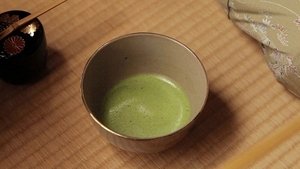
7. Cha-no-yu (Teaism)
One of the signature elements of traditional Japanese culture is cha-no-yu: the way of tea. It is a formal ritual of hospitality in which you make and serve matcha (powdered green tea) for your guests - but it is much more than just that. Over the centuries, cha-no-yu has evolved into nothing less than a philosophy and a lifestyle. Many design ideas birthed from the tea ceremony have exerted a profound influence on today's designers and artists. This time, with tea master Soshin Kimura as our guest, we revisit previous episodes of DESIGN TALKS plus connected to the tea ceremony to explore cha-no-yu design.

8. Design Hunting in Aomori
On "design hunting" episodes, our presenters head off to discover designs that are deeply rooted in local history and nature. This time Andy and Shaula explore Aomori Prefecture, at the northern tip of the main Japanese island of Honshu. Aomori designs are filled with rich reminders of the area's past and its natural environment, from prehistoric ruins to the famous Nebuta Festival. Our guest is graphic designer Atsuki Kikuchi, who helped design the Aomori Museum of Art. From design traditions related to the snowy climate to the very latest in local craftsmanship, we'll explore the depth of Aomori designs.

9. A Shift in Creation
After the Great East Japan Earthquake, a variety of designs appeared that re-examined and reshaped the relationship between people and objects. From projects that added new designs to pre-existing products, to schemes where consumers use 3D printers and digital machinery to become creators, a lot of ideas with amazing potential have emerged. Designer Satoshi Yoshiizumi joins us as we explore Japanese designs which offer a shift in creation.
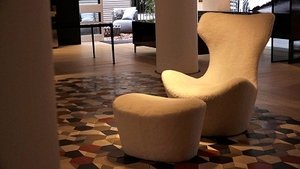
10. Japanese Design at Milano Design Week: Part 1
This week we begin a 2-part series on Italy's annual Milano Design Week. Every April, top designers and furniture makers display cutting edge interior designs at the Salone del Mobile.Milano. Andy reports directly from the exhibition on projects and concepts from top Japanese designers and brands. As we look at some amazing Japanese designs, we'll meet their designers, who are making an impact on the international stage.
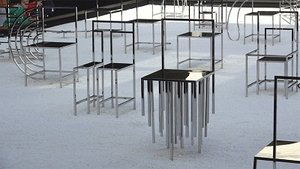
11. Japanese Design at Milano Design Week: Part 2
The 2nd episode in a 2-part series about the annual Milano Design Week, held every April. The Salone del Mobile is the world's biggest exhibition of international furniture and features cutting-edge design from around the world. Exhibits throughout the city are filled with countless designs. Andy explores Milano, showing us the latest products and installations. In our 2nd episode discover designs created by the projects of young designers, and explore the ideas behind them!

12. Boxes
From beautiful makeup boxes with gorgeous "maki-e" decorations to simple paulownia boxes that showcase the beauty of wood - box design has a long tradition in Japan. There are also legends of boxes containing mythical substances. Lifestyle coordinator Setsuko Yamada brings together traditional Japanese aesthetics and the latest design in a variety of fields. Explore the aesthetics of the box form!
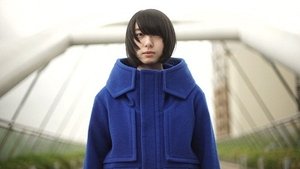
13. Yosoou
Today's theme: Yosoou, the art of crafting one's appearance. Kimono are just one example of garments born from Japan's unique aesthetic, while recently fashion inspired by the imaginative world of manga and anime is also attracting attention. Down the centuries, what have successive generations of designers sought to communicate through the garments they create, and what insights can clothing give us on the Japanese mentality? We find out with the aid of studio guest, fashion designer Junya Suzuki.

14. Book Design
Our topic this time is book design. We explore every aspect of a book's physical properties: from the cover, to paper, printing and dimensions. The rise of the Internet and e-readers mean fewer books are being sold worldwide. In response many designers are playing with the qualities that make physical books such a pleasure. Book designer Shin Sobue is in the studio as our guide to the world of Japanese book design.
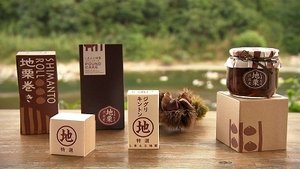
15. Design Hunting in Kochi
On "design hunting" episodes, our presenters head off to discover designs that are deeply rooted in local history and nature. This time, Andy and Shaula explore Kochi Prefecture, on the island of Shikoku. Over 80% of the prefecture is covered in forest, and this is reflected in the local design, as are the history and climate of this Pacific coastline confluence of mountain and sea. Our guest is graphic designer Makoto Umebara, who heads a Kochi-based project that promotes regional revitalization through design. From traditional crafts to the latest styles, explore the depth of Kochi design!

16. Tokyo Cityscapes
As Tokyo prepares for the 2020 Olympics, the city stands on the threshold of enormous change. From the skyscrapers of central business hub Marunouchi, to the history and tradition discernible on the streets of Asakusa, the Tokyo cityscape encompasses various distinctive vibes. Studio guest, architect Hiroshi Naito, is directly involved in the ongoing redevelopment project around Shibuya Station. Explore the present and future designs of Tokyo's urban cityscape!

17. Life Forms
Recently, an ecological approach to design has found its way into the global spotlight, with design elements and people interacting in harmony with their surroundings just as in a natural ecosystem. This is the goal of ecological design, which is a perfect fit for a traditional Japanese aesthetic that sees humanity as just one small part of the broader natural world. Alongside our guest, architect Akihisa Hirata, we explore the potential of new designs that transcend the framework of the artificial and the natural.
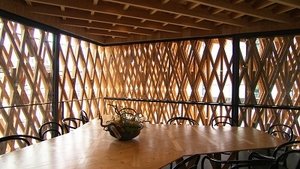
18. Kumu: Interlacing
The Japanese verb "kumu" refers to the process of crossing and interlacing materials. From the traditional Japanese architecture most often seen in shrines and temples; and the artistry of "kumiko-zaiku" decorative latticework; to the braided "kumihimo" cords used to tie kimono sashes, and more, Japan is host to numerous designs based in this approach. This time on DESIGN TALKS plus, we discuss interlaced design with architect Kengo Kuma, whose complex wooden structures incorporating traditional techniques have brought him global acclaim.

19. Mirrors
The use of mirrors dates back almost as far as human history. As well as offering the practical benefits of reflection, these polished surfaces also hold a longstanding mystique. And today the reflective properties of mirrors are used to create optical illusions in fields such as architecture, product - and book - design. Join expert guest Hisanori Ban, an architect known for his use of mirrors, as we reflect on the world of mirror design.
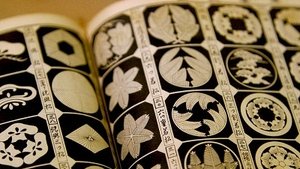
20. Icons
Today's theme is icons. From brand logos, to pictograms and emoji, our everyday lives are full of icon designs that condense key thematic or figurative elements into single images. Known for his work on corporate logos, designs and branding, creative director Kashiwa Sato is our expert guest on a tour of Japan's icon designs.
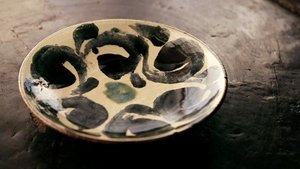
21. Design Hunting in Okinawa
On "design hunting" episodes, our presenters head off to discover designs that are deeply rooted in local history and nature. This time Andy and Shaula explore Okinawa Prefecture, far to the south of mainland Japan. The unique culture of these islands, including a range of traditional crafts that still thrive today, is influenced by historic ties with China and Southeast Asia. From distinctive pottery known in the local dialect as "yachimun", to Ryukyu glass, which turns discarded bottles into gorgeous works of art, we explore the depth of Okinawan designs shaped by the area's stunning nature and wonderful lifestyle.

22. Faces
Japan has lots of fascinating, traditional face designs, from the masks of noh theater to the makeup of kabuki. More recently, Japanese makeup styles have made a splash in global pop culture. This time our guest is Nobumichi Asai, a creative director known for artwork that uses face projection mapping technology. With him, we will explore designs related to faces.
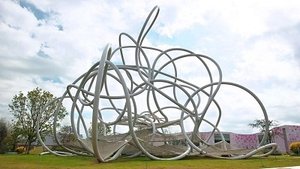
23. A Child's Perspective
Children see the world unfettered by preconceptions, and this is the gift that underlies their ability to make leaps of imagination that defy adult logic. Down the years, some designers have managed to access this mindset and create works of breathtaking originality by taking a fresh look at the world, as if through the eyes of a child. Together with architect Makoto Tanijiri, we explore the design potential in adopting a child's perspective.

24. Tokyo Cityscapes, Renovation
Our Tokyo Cityscapes series examines the unique architecture and look of Tokyo. This time our topic is renovation. Recent renovations of old wooden homes and unused buildings are giving structures a new lease of life while preserving their historic atmosphere. The key lies in urban design that goes beyond architecture. This style of renovation takes into account the lifestyles of residents, and how to build community bonds. We'll explore some newly renovated Tokyo cityscapes in the studio with guest Masataka Baba.
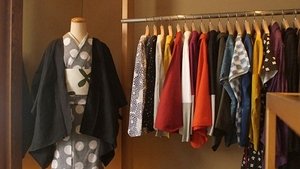
25. Kimono
The kimono is known around the world as Japan's traditional form of dress. Its design incorporates many important facets of Japanese beauty. The layers of cloth at the neck and hem allow wearers to demonstrate their individual taste, while the kimono textiles themselves feature dyeing techniques and weaving that express a sense of the season. Studio guest Takeshi Wakabayashi is a designer who makes modern kimonos that capture traditional beauty. We'll also meet other designers and artists creating fresh kimono designs for today!
